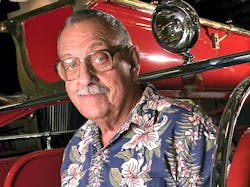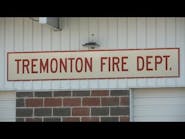Brunacini: The Life-Long Learner Who Has Read Every Issue
When you were a very young firefighter, the old guys told you that you had better enjoy your job because “time flies!” with your career in the fire service. Like most of their homespun observations, they were right on. I was reminded of this reality when Tim Sendelbach asked me to say a few words about Firehouse Magazine’s 40th anniversary. I got on the excited ride that Dennis Smith originally started by inventing a new magazine and have been on it ever since. The old guys were right, time flies, particularly when you ponder what has occurred in our business in the last 40 years.
When the magazine was born, I was assigned as the operations chief in the Phoenix Fire Department. I was directly involved as the boss of an incredible, highly empowered team that was developing just about every new program that was then going on in the 70s—EMS, operational SOPs, incident command, safety, wellness, early technology exploration, training and officer development, behavior management (we were wild men then, no women yet), staff building and on and on. As a young (dumb) assistant chief boss during that time, I was actively seeking any kind of wisdom, advice or examples of what the future of these new (and really scary) programs should actually look like. I guess one might observe that my strategic-level boss career and the magazine were invented about the same time.
I had read Report from Engine Co. 82, so I had some ideas about Dennis Smith, and then I personally became acquainted with him soon after he started Firehouse. I began attending and presenting at Firehouse Expo in Baltimore, where I got to actively listen and ask questions about what I saw and heard from all of us, from all over, doing a ton of new stuff. I would go home with a notebook full of ideas that would cause my hard-working team members to cringe. (A common hallway comment: “Oh my God, look out! The dwarf went to a conference. What’s next?”) I guess that the magazine was (and still is) built on both current events and what’s next. I later became friends with and hung out with the quiet hero Harvey Eisner, who we all miss every day.
Through the years, I have had the chance to both write Firehouse Magazine articles and make conference presentations on the progress of the programs we were inventing, implementing and trying to really figure out. That publication platform and conference forum created a huge benefit and advantage simply because it provided a way to expose the details of the practical, real-world developments in our service in a constructive and interactive way. The process refined and focused a discussion about what we were doing to a service-wise reaction and then a realistic internal review because the discussion players are real-life street-level firefighters and officers (not consultants) who are actively involved in actual service delivery.
Many times these changes were disruptive and jumbled up our comfort zone. When firefighters disagree with the new stuff you are suggesting or doing, they are not bashful about making reference to the non-marriage of your parents. This is just our regular reaction to change. I can still recall the energy generated by getting off the tailboards, calling Mrs. Smith a “customer” and making the incident commander physically stay in the buggy. Don’t worry about a dull future; in our service, the hits just keeping coming. We currently are struggling with improvements in alternate EMS response, the implementation of new research-based tactical techniques, behavioral health support, and cancer prevention and treatment, to mention a few. Just keep reading because as these current challenges are effectively addressed, there will be another set of exciting future issues to keep us busy.
I believe I have read every issue of Firehouse Magazine since the beginning, and I guess I will keep reading until I keel over. I extend my congratulations for a great 40-year run. I am certain that the Firehouse future is bright because the energetic, young, yet very experienced and effective editor-in-chief is applying his usual positive and very enlightened approach that will continually push Firehouse in the right direction. I will always look forward to hearing the mail truck pulling up and then getting to learn the next lesson in my never-ending enrollment as a fire service student.
Alan Brunacini
Alan Brunacini joined the Phoenix Fire Department in 1958, ultimately serving in every department position. He was promoted to fire chief in 1978 and retired in 2006. Brunacini is a graduate of the Fire Protection Technology program at Oklahoma State University, and has a bachelor’s degree and an MPA from Arizona State University. He is the past chairman of the board of the NFPA and the NFPA Fire Service Occupational Safety Committee (Standard 1500). Brunacini is the immediate past chairman of the NFPA Career Fire Service Career Organization and Deployment Committee (Standard 1710). He and his two firefighter sons currently own and operate the local command-level Blue Card hazard zone management program. They also present workshops, seminars and conferences to many fire departments throughout the country on various topics. Brunacini is the author of Fire Command, Command Safety, Timeless Tactical Truths, Essentials of Fire Department Customer Service and The Anatomy and Physiology of Leadership. He is currently working of several other fire service books. He and his sons also own and operate the Blue Card hazard zone training and certification program and the quarterly hazard zone magazine, B Shifter.






